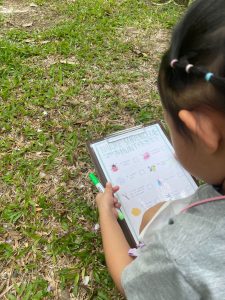As our world becomes increasingly digitized, children and families are losing opportunities to connect with the natural environment. This trend has been referred to as ‘nature-deficit disorder,’ a term coined by author Richard Louv in his book, The Last Child in the Woods.
Over the past decade, numerous scientific research studies have documented the benefits of connecting to nature, particularly for children in the early years. One of the significant benefits of nature for children is that it supports multiple developmental domains. Nature is essential to children’s development in every major way—intellectually, emotionally, socially, spiritually, and physically (Kellert, 2005). Exposure to nature can enhance children’s cognitive abilities, creativity, and imagination. It can also improve their emotional well-being by reducing stress, anxiety, and depression, and promoting feelings of happiness, calmness, and relaxation.
Nature can positively impact children’s physical health by promoting physical activity, improving motor skills, and enhancing children’s senses, particularly their sense of touch, sight and smell. Outdoor environments for children offer the potential for them to do, think, feel and be all at the same time. .
In conclusion, it is clear to us that connecting with nature is crucial for children’s development and well-being. Parents and caregivers can encourage children to spend more time outside by providing opportunities for outdoor play, taking nature walks, gardening, or visiting parks and nature reserves.
Find below some easy nature play and learning ideas that you can easily do at home:
- Gardening / planting: If you are fortunate enough to have a garden of your own, gardening is an all time favourite for most children. You will see the wonder and awe the children can feel from being able to be involved and help with a chore like gardening.
- Planting: If you don’t have a garden don’t worry! Growing sprouts from a seed is as simple as it can get. Record the growth with your child and make it their very own home project!
- Nature / Treasure Hunt: Go on a walk in nature and see what you can find.
- Nature loose parts: Collect some natural found objects from nature to make your own mobile to hang at home or create any kind of art piece with.
- Lead / Nature rubbings: Explore the different items you can find on your nature walk and give your child a piece of paper and crayons or colour pencils. Place the sheet of paper on top of items of different textures and gently shade with crayons to transfer the design onto paper.






